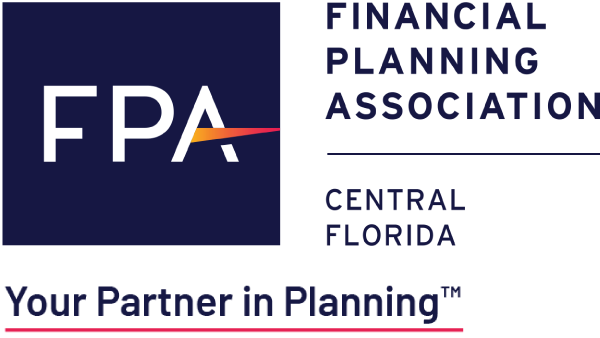
The Pros, Cons and Complexities of Early Retirement Account Withdrawals
The Pros, Cons and Complexities of Early Retirement Account Withdrawals
The temptation to dip into retirement assets early can be powerful, especially during financially stressful circumstances. Unexpected job (and income) loss. A huge college tuition bill. A disability or health issue that cuts into earning power and brings unanticipated medical expenses. These are among many reasons that people might consider tapping into their retirement accounts — IRAs, 401(k)s and the like.

These types of accounts were designed to be treated much like a produce crop. Plant seeds. Provide light, water and fertilizer consistently. Let grow. Harvest when ripe. With retirement accounts as with crops, there are opportunities to harvest prematurely but also, potentially, consequences for doing so.
“Generally speaking, tapping into your retirement accounts early is a bad idea,” says FPA member and CERTIFIED FINANCIAL PLANNER™ professional Jonathan P. Bednar of Paradigm Wealth Partners in Knoxville, TN. “There is a reason Albert Einstein called compounding the eighth wonder of the world. Letting your money grow for you for the long-term and avoiding the temptation to access that money early can [pay] extraordinary dividends.”
“When you see how much money one dollar can turn into over 30 years, it’s easy to justify leaving those assets alone until retirement,” adds FPA member Leon LaBrecque, CFP® of Sequoia Financial in Troy, MI.
Under federal rules, people with a qualified retirement account such as a 401(k) or a traditional IRA (Individual Retirement Account) can start withdrawing funds from their account at age 59½ and must take distributions from their account starting at age 72. Withdrawing money from a qualified retirement account prior to age 59½ means the account holder not only will likely have to pay state and federal income tax on the amount withdrawn, they also will be subject to a 10% tax penalty, unless the money is used for certain “excluded” purposes. Those exclusions include:
- When the funds are used by the account holder or a qualified family member to purchase or rebuild a first home (limited to $10,000 per lifetime).
- When the funds are used to cover medical expenses that were not reimbursed, or to pay for medical insurance if the account holder loses his or her employer’s insurance.
- When the funds are used to cover higher education expenses.
- When the funds are used to cover expenses related to the birth or adoption of a child (a new exclusion as of 2020).
- When an employee, after separating from employment, withdraws the funds systematically in a series of at least five installments, known as Substantially Equal Periodic Payments, or SEPPs.
- When the funds are withdrawn from a 401(k) (but not an IRA, for which different rules apply) by an employee who separates from employment (retires, quits or is fired) at age 55 or later.
The drawbacks to withdrawing money early from a retirement account extend well beyond tax penalties. For one, an early withdrawal sacrifices the growth potential of the assets that are withdrawn. Taking money out of a retirement account prematurely means losing out on the compound growth potential associated with those assets. The assets held in a retirement account have the potential to compound in value, without taxes eroding that value. Over time, earnings can compound upon earnings, providing the growth engine that people rely upon to build a large enough asset base to last through retirement.
For 401(k) account holders, early withdrawals must come out in the form of a loan that must be repaid over time. So the withdrawal comes with a payback obligation as well as a tax obligation and a penalty.
An early withdrawal also amounts to a reduction in the size of a retirement nest egg. It means using money now that likely will be needed later, during retirement, notes LaBrecque. “You need to make sure you are keeping a sustainable amount for the future, taking into account inflation and expectations of future expenses.”
“Your 401(k) [or other type of retirement account] is not a bank,” he adds. Instead, he suggests treating it as an untouchable asset in the vast majority of circumstances.
In certain rare situations, however, a retirement account could be a person’s last financial resort — their only means of covering basic living expenses (or dealing with an unexpected severe financial challenge). In those situations, says LaBrecque, “survival is more important than retirement,” and a premature withdrawal could be warranted.
There also are rare situations where making a series of early withdrawals — SEPPs — under Rule 72(t) in the federal tax code may make sense, according to LaBrecque. The rule exempts taxpayers from early penalties provided they take account withdrawals in at least five installments over five years. This could be an option for people who retire prior to age 59½.
Before deciding to tap a retirement account early and live with the consequences, seek advice from a financial professional to discuss other potential options, suggests New York City-based FPA member Sallie Mullins Thompson, CFP®. Often, there’s another, better alternative. “It is imperative to look at all other options first.”
During situations in which early retirement account withdrawals are a consideration, “there is no one-size-fits all strategy,” says FPA member Sean M. Pearson, CFP® based in Conshohocken, Pa. “But working with a financial planner will help find the best solution for your unique situation.”
To find a CERTIFIED FINANCIAL PLANNER™ professional in your area, use the Financial Planning Association’s national searchable database, accessible at www.PlannerSearch.org.

